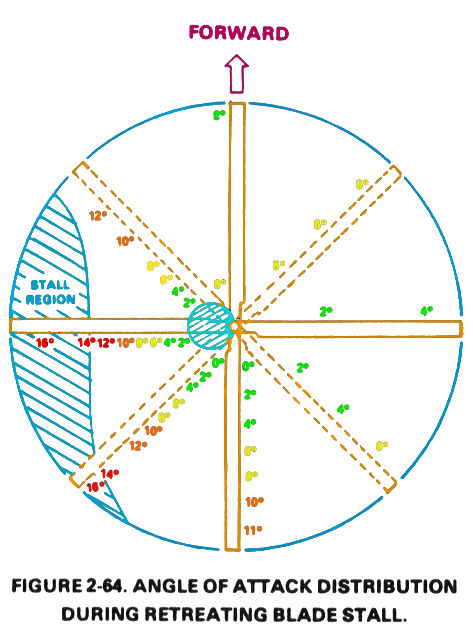A DUCTED FAN IS, IN ESSENCE, A SHROUDED PROPELLOR WHICH FOCUSES THE THRUST—AND IS A GREAT DEAL MORE EFFICIENT THAN AN UNSHROUDED ONE
SO WHY AREN’T ALL PROPELLORS SHROUDED?
BECAUSE THAT WOULD MEAN A RE-DESIGN OF MOST AIRCARFT (I DON’T REALLY KNOW)
The first VTOL (Vertical Takeoff and Landing) aircraft was the hot air balloon (which wasn’t too particular about where it landed).
Hydrogen filled airships followed (the Hindenburg disaster didn’t do much for their image)—and then came helicopters, and jump-jets like the Harrier.
More recently came the tilt-rotor—a good idea that hasn’t been implemented quite as intelligently as one might like). The V-22 Osprey performs pretty much as planned—and is much faster than a traditional helicopter—but is expensive, maintenance heavy, and not the most practical of designs. Given that it was designed specifically for military use, and development took decades, you would have to wonder why its fuselage is so cramped. It is too narrow to carry a Humvee, for instance.
All have their uses—and the VTOL capability is invaluable—but they suffer from cost and other limitations. VTOL is still, very much, a work in progress—though the signs are encouraging. The helicopter, itself—the kind with a tail rotor—does not look like the way to go.
Helicopters are affected by a limiting condition called ‘RETREATING BLADE STALL http://www.copters.com/aero/retreating.html
A tendency for the retreating blade to stall in forward flight is inherent in all present day helicopters and is a major factor in limiting their forward speed. Just as the stall of an airplane wing limits the low speed possibilities of the airplane, the stall of a rotor blade limits the high speed potential of a helicopter. The airspeed of the retreating blade (the blade moving away from the direction of flight) slows down as forward speed increases. The retreating blade must, however, produce an amount of lift equal to that of the advancing blade. Therefore, as the airspeed of the retreating blade decreases with forward aircraft speed, the blade angle of attack must be increased to equalize lift throughout the rotor disk area. As this angle increase is continued, the blade will stall at some high forward speed.
As forward airspeed increases, the "no lift" areas move left of center, covering more of the retreating blade sectors:

The Tri-Fan 600 by the XTI Aircraft Company of Denver offers an intriguing variation on the tilt-rotor theme. It uses three ducted fans for the VTOL aspect—but only two are used for forward flight. The third is then covered by a sliding door to prevent drag. You need three for vertical lift, but the wing takes over that task as forward momentum develops.
This is an ingenious design. The only downside that I can see—apart from the cost implications—is that it prevents the aircraft having a rear door with a tail ramp (which is particularly useful for casualty evacuation, cargo carrying, or military application). But, lack of a tail ramp shouldn’t matter as far as its current intended purposed is concerned.
Retreating blade stall is not a relevant factor when the ducted fans are used vertically as propellers.


The following extract is from a piece in gizmag.com by David Szondy dated August 26 2015. The corporate website is at http://www.xtiaircraft.com/
Under development for two years, the TriFan 600 is designed as a six-seat, fixed-wing, composite-construction, fly-by-wire airplane with both VTOL capabilities and the speed and range of a conventional business jet. It would carry a pilot and five passengers at a cruising speed of 340 knots (400 mph, 644 km/h) and have a ceiling of 30,000 ft (9,000 m). Its two high-performance turboshaft engines give it a range of 800 to 1,200 mi (1,300 to 1,900 km), depending on takeoff method and payload.
Meanwhile, three ducted fans behind a sliding hatch provide vertical lift. One selling point of the aircraft is that by eliminating the need to travel to and from airports and transport passengers door-to-door (or helipad-to-helipad), it would be competitive even with faster conventional aircraft. The TriFan 600 will initially be targeted at business customers and is expected to cost from US$10 to $12 million.
On Tuesday, XTI Aircraft announced an equity crowdfunding campaign that the company refers to as the "first fundraising effort of its kind in aviation history." Based on new rules approved by the U.S. Securities and Exchange Commission, backers can buy a stake in the company. The campaign is part of a larger fundraising effort that is also looking to attract venture capital, private equity, and high net-worth investors.
The new company boasts some high-powered officers, including Vice Chairman Jeffrey Pino, who is the former president and chief executive of Sikorsky Aircraft, board member Charlie Johnson, who is the former president of Cessna Aircraft Company, and Chief Engineer and board member Dennis Olcott, who served as chief engineer for Adam Aircraft and the PiperJet program.
If the fundraising effort is successful, the company aims to get the first proof of concept prototype completed in two-and-a-half years before building another one or two prototypes for further testing and FAA certification.
"We view equity crowdfunding as a creative way to involve everyone as true stakeholders working together to pioneer this all new way to fly," says Brody. "It's a way to turn all of our supporters into potential stockholders by providing the public a once-in-a-lifetime chance to get in early on something truly revolutionary."
The


No comments:
Post a Comment